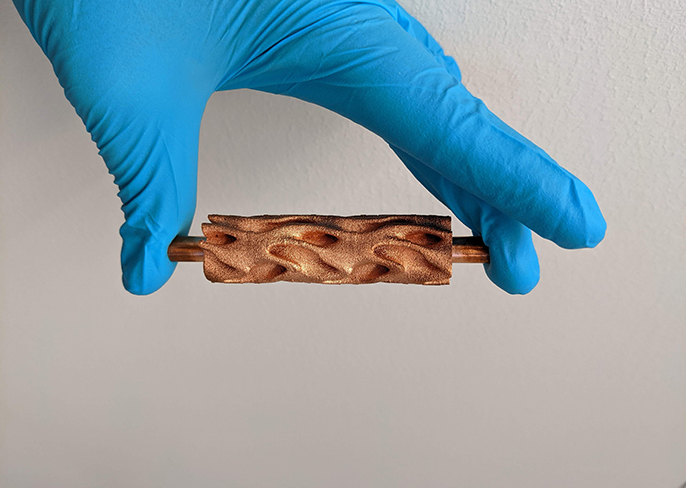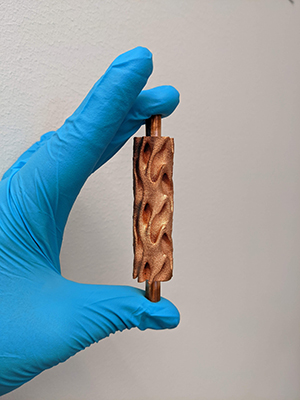Loop of energy can save costs in industry

KTH researchers from different disciplines join forces to create a sustainable loop from electricity to waste heat, and back to electricity. This saves operating costs for energy-intensive industries and the impact on our planet.
The additive manufacturing group at the Department of Materials Science and Engineering (MSE), has produced a prototype copper heat exchanger via electron beam powder bed fusion on the Freemelt ONE 3D printer.
The particular lattice-like structure of the heat exchanger was designed by collaborators in the School of Engineering Sciences in Chemistry, Biotechnology and Health (KTH). To optimize the structure an in-house computational fluid dynamics (CFD) solver was used, a process of mathematically modeling a physical phenomenon involving fluid flow. With the production of the prototype, it will now be tested experimentally.
The group also plans to print larger, more practical prototype heat exchanger designs with the help of the Department of Production Engineering (IPU).

The commercial version of a future heat exchanger could range from the size of the first prototype all the way up to dimensions of nearly half a meter, which is the current maximum size for this particular printing process.
“The end goal is to integrate the custom heat exchanger into a system filled with the reactive fluid for power production, that is, generating electricity from waste heat”, says Ethan Sullivan, researcher at MSE.
The reactive fluid helps maintain high heat transfer capability across the short length of the heat exchanger and harvests a large amount of thermal energy from the hot source almost immediately in the form of chemical energy.
As a result, chemical energy can then be released in the form of mechanical or electrical energy.
“The project aims to save operating costs for energy-intensive industries by creating a sustainable loop from electricity to waste heat back to electricity”, Sullivan says.
The technology can be applicable to many different industries, including refrigeration, server halls, and energy production.
”One of the unique advantages that 3D printing gives us is that we can easily and quickly create a custom-design heat exchanger to suit the particular need of an industry.”
You have previously denied the display of content of the type "External media". Do you want to show content?
